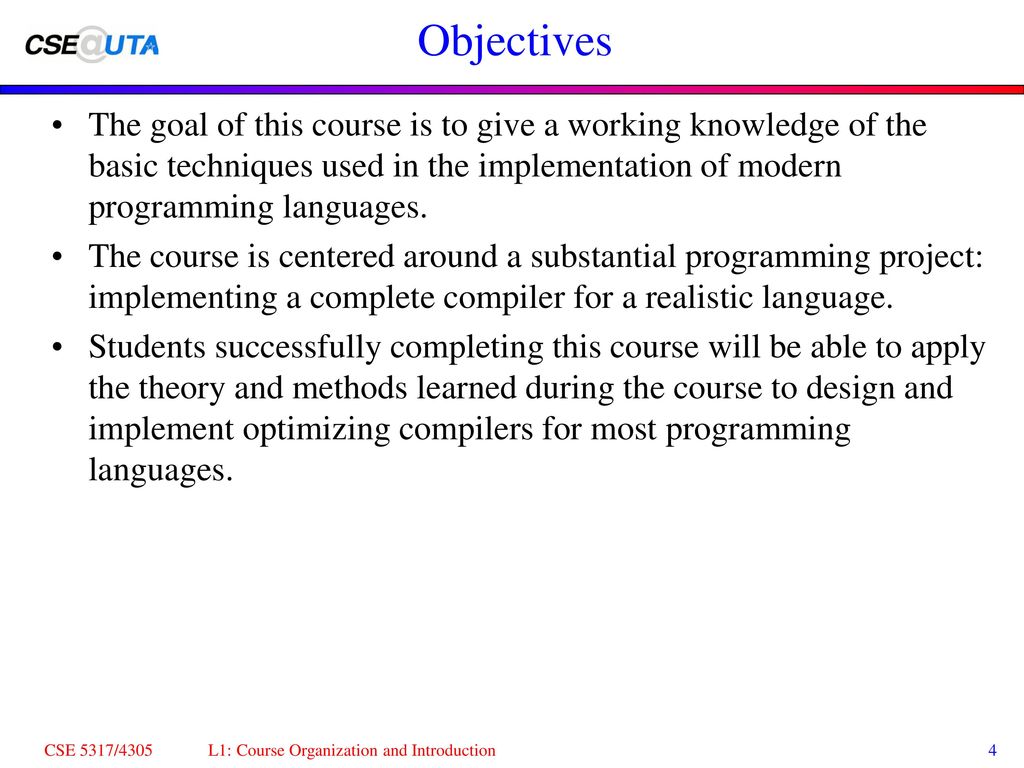
InterpreterĪn interpreter, like a compiler, translates high-level language into low-level machine language. It deals with macro-processing, augmentation, file inclusion, language extension, etc. PreprocessorĪ preprocessor, generally considered as a part of compiler, is a tool that produces input for compilers.
#Compiler design course code#
The C compiler, compiles the program and translates it to assembly program (low-level language).Īn assembler then translates the assembly program into machine code (object).Ī linker tool is used to link all the parts of the program together for execution (executable machine code).Ī loader loads all of them into memory and then the program is executed.īefore diving straight into the concepts of compilers, we should understand a few other tools that work closely with compilers. User writes a program in C language (high-level language). Let us first understand how a program, using C compiler, is executed on a host machine. Similarly, an assembler is a program that converts the assembly language to machine-level language.

A compiler is a program that converts high-level language to assembly language. The high-level language is converted into binary language in various phases. This is known as Language Processing System.
#Compiler design course series#
These programs are then fed into a series of tools and OS components to get the desired code that can be used by the machine. So we write programs in high-level language, which is easier for us to understand and remember. The hardware understands a language, which humans cannot understand. We have learnt that any computer system is made of hardware and software. It would be a difficult and cumbersome task for computer programmers to write such codes, which is why we have compilers to write such codes. To instruct, the hardware codes must be written in binary format, which is simply a series of 1s and 0s. Binary language has only two alphabets, 0 and 1.
#Compiler design course software#
Hardware understands instructions in the form of electronic charge, which is the counterpart of binary language in software programming.

Hardware is just a piece of mechanical device and its functions are being controlled by a compatible software. However, because compiled languages deliver native machine code that doesn’t have to be translated at run time, these programs typically offer faster execution.Computers are a balanced mix of software and hardware. Interpreted languages offer greater speed and flexibility in the software development process, since programmers don’t have to compile the entire source code every time before testing. Understanding how compilers work and when to compile a program is an important fundamental skill for software development.Ĭ programming and the use of other compiled languages requires a different process compared to interpreted languages such as Python or JavaScript, which read, translate, and execute code line by line. In the process of compiling, the source code is checked for syntax errors, improper variable and function calls, linker errors, and other common debugging issues, which can then be identified and fixed before compiling or “building” again. Compilers are programs that convert high-level, human-readable source code written in a programming language such as C++ into machine-readable object code that can be executed by a computer.


 0 kommentar(er)
0 kommentar(er)
